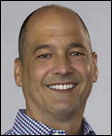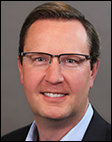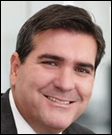HIStalk Interviews Carm Huntress, CEO, RxRevu
Carm Huntress is CEO of RxRevu of Denver, CO.

Tell me about yourself and the company.
I started RxRevu about eight years ago. I have about 20 years of early-stage startup experience. RxRevu is my first endeavor into the healthcare or digital healthcare space.
The company has been focused mainly on drug cost transparency to providers for most of its history. It’s an exciting space and a lot is happening, both with our customers and even at a regulatory level.
What outcomes can result when a patient arrives at the pharmacy where their prescription was sent electronically and they’re told it will cost $200 instead of the $15 they expected?
When you look at the data, it’s pretty interesting. About one-third to two-thirds of prescription abandonment, depending on the studies that you look at, is due to cost. That’s only getting worse now with consumer-driven healthcare.
When you think about adherence, when you think about getting the patients on the medications and keeping them on the medications that are so important in terms of driving positive outcomes, cost is the biggest thing. A lot of the work we do is focused on preventing that sticker shock at the pharmacy, which leads to abandonment and the patient not taking their medication.
It’s harder to be a savvy consumer with electronic prescribing since you have to choose the pharmacy upfront without knowing the prescription’s cost, then extra work is required to send it to a different pharmacy that perhaps has a better deal. How does your system improve that situation?
We identify that as a major issue today. If the prescription is already gone to the pharmacy, the consumer really doesn’t have much choice. What we realized is there’s this point of shared decision-making at the point of care between the provider and the patient before the script is sent to the pharmacy. That’s a really important point as they are making that decision.
RxRevu works directly with the payers, pharmacy benefit managers, and insurance companies to bring real-time cost transparency to that point of prescription, that point of shared decision-making between the provider and the patient. As the provider is prescribing, we’ll show the cost of that drug at the preferred pharmacy of the patient. We will show lower-cost therapeutic alternatives.
We will also show drugs that have less administrative overhead, both for the provider and the patient, in terms of time to therapy, such as a drug that requires prior authorization that will take time, but there’s a preferred therapy from the patient’s insurance company or PBM that does not require a prior auth. The provider can simply select that and route the prescription to the patient’s pharmacy.
The last thing we do is show alternative pharmacies. Maybe it’s mail order, or there’s a better opportunity for the patient to save money just by going to a different pharmacy in their network. We will show that as well.
Our goal is to bring that individual patient cost transparency around their drugs to the provider at the point of care, so both the provider and the patient can make the most informed prescription decision.
Does it benefit the prescriber as well since they can not only prescribe the most cost-effective therapy, but also avoid the extra work of issuing a second prescription or sending the original one to a different pharmacy at the patient’s request?
We are, so far, one of the rare tool that providers really like. Out of all the surveying we do, we get very high marks on, “This is really valuable information that I’ve been looking for.” There’s been a lot of distrust, when this information was static and not real time, and now we can provide it real time on a patient individual basis. The number one reason coming back from providers is that while it takes maybe a few more seconds to look at the cost information and make a better-informed decision, reducing the headache of pharmacy callbacks and patient friction in getting them on therapy and keep them on therapy is a huge benefit to providers.
That saved time means a lot for them and their clinical staff. Statistics show that it costs about $15,000 per year for a doctor or their clinical staff to manage prescription administration, such as prior auths, pharmacy callbacks, and those types of things. It’s a pretty costly administrative thing. We are trying to cut that off by getting this information front of the doctor upfront so that all these issues that we’ve talked about have been sorted out prior to the patient getting to the pharmacy to pick up the script.
What were the integration challenges involved with collecting real-time information from insurance companies and pharmacies and then inserting it into the EHR workflow so that it is actionable?
It’s a challenging two-sided market, and very hard to set up. On one side, you have to set up the direct connectivity between us and the PBMs, the pharmacy benefit managers, to bring real-time cost transparency into our network. There’s many of those that we have to connect to. We’ve connected so far to about 150 million insured Americans and our network continues to grow. Our hope is that eventually we’ll have complete coverage in the US, and there’s some good things coming, from a regulatory standpoint, that will help us achieve that.
On the flip side, once you aggregate all that data, you have normalize it and standardize it so you can provide it to the electronic health records. Today we are partnered with Epic, Cerner, and Athenahealth, which arguably are the biggest ambulatory providers in the US. It’s integrated directly into the electronic health record and the prescribing workflows. That’s a big challenge in terms of making sure that the integration is done well and is part of the workflow.
We have focused heavily on the prescriber experience and making sure that it’s really in line with what they are doing today. If the doctor has to go out to a portal or another service, they don’t use it. They won’t take the time. We wanted to ensure that this is part of their workflow, so that as they are ordering the prescription, they can see this cost transparency information.
It’s occasionally cheaper for the patient to pay cash instead of using insurance, especially if they have a discount coupon. Can you detect those situations where they will pay less by not using their insurance?
We look at all sorts of discount cards, things like GoodRx. What we found in our research is those discount cards are only beneficial about 5% of the time compared to a patient’s co-pay. There are certain situations where the drug is not covered, or other situations where a discount card may be beneficial, but the truth is that while insurance is getting more expensive and co-pays are going up, it’s most beneficial to get on whatever their insurance is. Where there are cost-saving opportunities, there’s usually a therapeutic alternative or lower-cost preferred drug in the same class that would be significant in terms of savings to the patient. They’re just unaware of that, and so is the provider, and that is the information we are providing. That can lead to significant savings to the patient.
Who pays for your service?
Whoever the risk-bearing entity is that covers the pharmaceutical costs. In this case, most of the PBMs and payers we work with cover the cost. We offer this free to providers across our entire footprint. A provider using Epic, Cerner, or Athenahealth doesn’t get charged for this and it’s part of their workflow. We want to save money for the patient and the insurance company.
How does a physician or group connect?
A small practice might be running Athenahealth, which is a cloud-based EHR, so we are automatically turned on. The providers don’t have to do anything,. We are enterprise deployed across the entire Athena footprint.
In the case of where the health system is running an on-prem instance of the EHR, which has happened a lot more in Epic, we have to come in and do about 10 hours of work to install our network into the electronic health record. It’s not too much overhead and is pretty easy to do compared to the value you get from turning us on.
What role do you see for the federal government in prescription pricing and transparency?
There is now a 2021 Part D mandate to require cost transparency for payers and PBMs that support that market. That has been huge in growing our network as more PBMs provide this as a service. We think those mandates will expand and potentially lead to provider mandates, where they will be required to have this information available to them in the EHR over the next few years.
Our hope is that this will drive a bigger discussion about cost transparency across all services, so that just like any other shopping experience that we have in our life where we know the price upfront, we can get that for prescriptions, but all services. We are one of the leading indicators of the value of this because our payer and PBM partners are seeing significant ROI in terms of cost savings to both them and their members, as well as reduction in administrative overhead in terms of prior auth and other administrative things they face with prescription drugs.
Why did so many large health systems invest in your Series A funding round?
I think there’s a couple of reasons. The first is their identification of the administrative burden and time that their providers spend managing prescriptions and the benefit they saw in having cost transparency at the point of care.
Secondly, this is helping them move into value. If you think about the push in healthcare towards value-based arrangements –ACO, fully capitated, or shared savings — prescriptions are a critical part of that success. If they have to take prescription drug risk, this type of service, in terms of having cost transparency, is critical.
Also, because cost and adherence are so tied, they want to make sure they get the patient on a drug they can afford, because that is the biggest thing that drives outcomes and prevent things like readmissions.
That was a lot of the driving force behind health system interest in working with us and having this type of technology embedded in their health systems as they move to risk and to better manage their labor costs.
Where do you see the prescription transparency movement as well as your company moving in the next few years?
We will see a pretty broad expansion of cost transparency services across all payers. I think it’s obvious that we can’t really measure value unless we know what things cost. We have proved, at least in the prescription drug space, that having this information leads to better-informed decision-making by providers and saves significant money to the payers and PBMs. The cost transparency movement is here, it’s here to stay, and it is only going to expand.
We are focused on helping providers make the most clinically effective decision that is both cost-effective and convenient for the patient. We are going to help providers, as well as patients, get that most cost-effective drug. We will support health systems as they move into value more aggressively and take on risk to optimize costs, especially around prescription drugs. Our fundamental belief is that the whole prescription drug value chain should be based on value and the outcomes that these drugs deliver to the patients who take them.


















"A valid concern..." Oh please. Everyone picks the software they like and the origin of that software is an afterthought.…